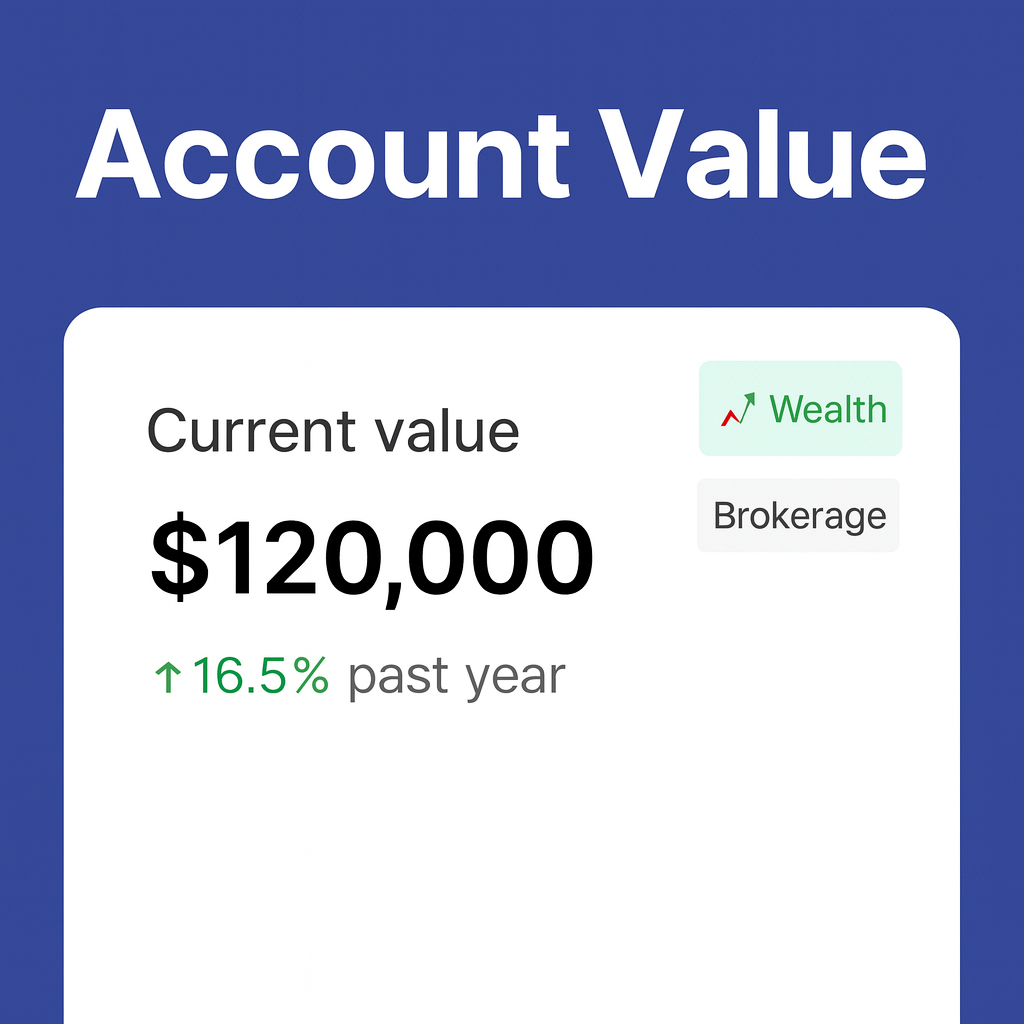The Next Chapter of Wealth: Flat-Fee, Human-Led Advice For Millennial HNWIs

Millennial HNWIs Are Not A Future Hypothesis Anymore
Their share of wealth is rising quickly
Using Federal Reserve data, one recent analysis showed that total wealth held by Millennials in the United States reached about 15.25 trillion dollars by mid 2024. Five years earlier that figure was roughly 3.9 trillion dollars. In other words, millennial wealth has almost quadrupled in half a decade.
Another global wealth report released in 2025 estimated that the United States added roughly 379,000 new millionaires in 2024. That brought the total number of millionaires in the country to close to 24 million, which is around forty percent of the worldwide total. Overlay that with the longer term inheritance numbers:
- Roughly 84 trillion dollars will change hands through 2045, with about 72 trillion going directly to heirs.
- Most of that will end up with Millennials, not with today’s retirees.
So this is not just a future story. Millennial high net worth clients already matter and their importance will grow every year. They inherit assets, not the relationships that came with them. The handoff between generations is not just about money. It is also about trust. Global wealth report on next generation clients quoted around 81 percent of younger wealthy inheritors said they intend to switch firms within one to two years of receiving assets.
The message is blunt.
Younger wealthy clients are willing to keep the portfolio. They do not feel any need to keep the old advisory relationship.
Most of them are not rejecting advice as a concept. They are rejecting a style of relationship that feels slow, paper heavy and misaligned with how they live.
Fee Aware, Not Fee Averse
They prefer subscription style pricing
There is a common assumption that younger investors are cheap and unwilling to pay. The data does not really support that.
One widely quoted investor satisfaction study reported that nearly three out of four millennial investors said they would rather pay through a subscription model for full service advice rather than %AUM. Older investors were noticeably less enthusiastic about such options.
Other planning and technology surveys say similar things. Younger, higher earning households consistently express a preference for simple, predictable pricing instead of layered asset based fees that are hard to decode.
So the pattern is more like this:
Millennials are happy to pay for advice. They just want to feel that the pricing is honest and that the value is real.
2.2 Flat fees match how they think about value
Many published fee schedules for full service firms still show advisory charges around one percent per year for relationships in the one to one point five million dollar range, with only a modest discount above that.
For a household with three to five million dollars of investable assets that works out to thirty to fifty thousand dollars per year in advisory fees.
If that client is also dealing with:
- RSU taxation
- Private funds and K 1s
- Cross border or multi state situations
- Early stage ventures or a future exit
then a flat fee that is explicit and attached to actual thinking and planning can feel more honest and more aligned.
A millennial HNWI might be perfectly willing to pay ten thousand, fifteen thousand or even more per year for a service that feels like a real partner. What they resent is feeling like a slice of a revenue line item.
3. A Different Balance Sheet: RSUs, Alternatives And Sophistication
3.1 Equity compensation is now central to net worth
For many people in earlier generations wealth was built slowly through salary, employer retirement plans and home equity.
For many millennial high earners, especially in technology and related industries, equity compensation is the center of gravity.
One summary of a major equity compensation study noted that such awards now make up about 43 percent of millennial net worth on average and a smaller share for older cohorts.
Another article focused on the same topic put the numbers at 42 percent for millennials, compared with 24 percent and 19 percent for older age groups.
In practical terms that means:
- A large share of net worth is concentrated in a single company
- Major tax events show up when stock vests or options are exercised
- Decisions about selling, holding and diversifying can move the long term outcome by millions
This is not something a generic asset allocation widget can handle on its own.
3.2 More alternatives and more digital assets
Younger wealthy investors also behave differently when it comes to what they own.
Survey work on these investors shows that younger cohorts allocate a larger share of their portfolios to alternatives such as private equity, venture capital, private credit and real estate funds than older investors do.
So the typical millennial HNWI balance sheet can easily include:
- Employer stock and RSUs
- Public market portfolios
- Retirement accounts
- Private funds
- Direct real estate and home equity
- Startup or private company stakes
- And ofcourse the biases that come along
This is not a simple 60:40. It is a portfolio that demands real modeling, scenario work, and joined up thinking around tax and liquidity.
3.3 Manual tools struggle to keep up
On the advice side, many firms still rely on:
- Spreadsheets and manual data entry
- Paper or PDF based onboarding
- Systems that do not talk to each other for tax, planning and investing
Industry write ups regularly note that advisors can spend around two thirds of their time on internal tasks. That includes filling forms, transferring data between systems, assembling reports and handling basic admin.
That time budget might work for a small book of very simple households. It does not work when portfolios are complex and clients expect fast, clear answers to questions that cut across tax, equity, estate, planning and markets.
4. Human First, Tech Heavy: How Younger Clients Actually Want Advice
4.1 They still want a person, but with better tools
A lot of debate about advice has been framed as humans versus automation. The research paints a more nuanced picture.
One investor poll that separated responses by age found that 62 percent of millennials believed a human advisor would generate better returns, compared to 38 percent who favored a purely automated solution. The main reason given was trust.
More recent work suggests that people are warming up to the idea that technology can support good advice, but not replace it.
A planning survey published in 2025 reported that most respondents still trusted humans more than software for important financial decisions, but younger respondents in particular wanted their advisor to use modern tools on their behalf.
So younger wealthy clients are not asking for a robot to run their lives. They are asking for a person who is both emotionally available and technically equipped.
4.2 Where technology should actually show up
For a millennial HNWI, a good human relationship is non-negotiable. But that relationship is much more powerful when it sits on top of the right kind of infrastructure.
Modern analytical tools can:
- Pull data from multiple brokers, retirement providers, stock plan systems, fund administrators and crypto platforms
- Model RSU vesting and stock option exercises under different tax and residence scenarios, including AMT and multi state situations
- Track capital calls, liquidity and performance in private funds alongside public markets
- Scan for tax loss harvesting and diversification triggers across the entire household picture
- Turn all of that into plain language summaries that an advisor can edit and discuss with the client
When that happens, the advisor can spend far more of their time on actual thinking and conversation, and far less on moving information around.
Several industry commentaries now suggest that good use of technology can shift the mix of work for a typical advisor from roughly one third client facing time to something closer to two thirds or more.
That is exactly what is needed if flat fee, high touch service is going to add up.
5. Personalization At The Level Millennial HNWIs Expect
5.1 Treat RSUs as a core planning object, not a side note
As the equity research above shows, for many younger professionals equity awards are not a bonus, they are half the balance sheet. One write up of participant data from a large equity study makes the point clearly: these awards “make up nearly a third of employees’ net worth on average, and for millennials the figure is over forty percent.”
A serious planning relationship for this group needs to track the whole journey:
- Grant and vesting schedules
- Withholding and estimated tax
- Concentration risk and diversification plans
- The link between each decision and long term goals
This is both technical and emotional. Selling stock can feel like “giving up” on a company someone worked hard to build. Holding too much can quietly put their entire future at risk. The advisor has to sit in that tension with them, while the tools quietly do the math.
5.2 Go beyond investments to life, taxes, estate and values
Research on younger wealthy households repeatedly highlights that they care about more than beating an index. Many also care about:
- Flexibility in their careers and locations
- Tax efficiency across salary, equity, business income and investment returns
- Outcomes for partners, children and parents, sometimes spread across multiple countries
- Aligning their money with their values and causes they care about
That pushes advisory relationships in a more holistic direction. Portfolios still matter, but they sit inside a wider conversation that includes:
- Life design
- Taxes
- Estate planning
- Philanthropy and impact
Technology can support that by keeping the numbers updated and by surfacing risks and opportunities early. But the actual decisions and the emotional weight of them still sit with humans.
6. What A Better Model Looks Like For This Generation
Putting all of this together, a pattern emerges.
A model that really works for millennial HNWIs tends to have these traits:
Flat and transparent pricing
The client knows what they will pay each year. They are paying for access, thinking and planning, not for the privilege of having their assets parked in one place.
Human relationships built on strong infrastructure
Advisors spend the majority of their time listening, explaining, coaching and deciding with clients. Systems handle the bulk of the input side, the calculations and the basic documentation.
Native support for equity compensation and alternatives
RSUs, options, private funds, secondaries and digital assets are not bolted on as “other assets”. They are modeled properly and integrated into every plan.
Joined up thinking on tax and estate
Plans connect what happens today with what happens at retirement, at a future liquidity event and at inheritance, rather than treating each in isolation.
Digital where it helps, human where it matters
Clients can see their picture, run simple what if scenarios and message their team easily. When something big happens, they can still talk to a real person who knows them.
For a generation that grew up with subscription services, good software and open information, this kind of arrangement feels less like a luxury and more like the baseline.
A Simple Way To Sum It Up
Millennial high net worth individuals sit at the crossing point of three big shifts:
- The largest intergenerational wealth transfer in history
- The most complex mix of assets mainstream advisory has ever seen
- A strong expectation that pricing and technology should be clear, fair and modern
The traditional model of “one percent of assets on a mostly standard portfolio” has trouble meeting them where they are.
A flat fee, human led model that is backed by serious technology has a much better chance. It respects their intelligence, it fits their balance sheet and it aligns the incentives on both sides of the table.


.png)
.jpg)
.png)
.png)
